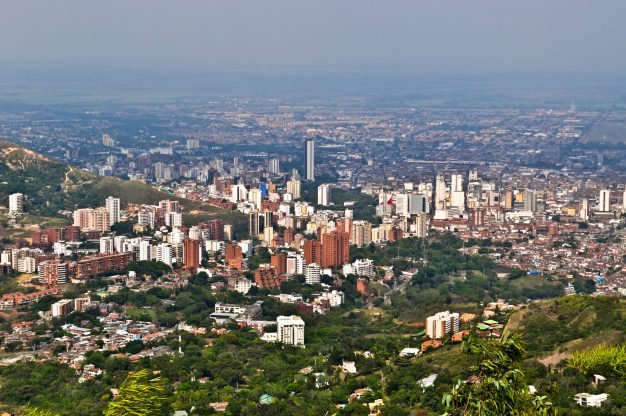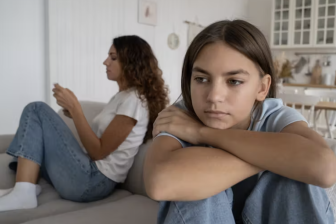
What are we learning about urban wellbeing during COVID?
In recent years, many cities have launched new efforts to build healthier urban environments – happier, safer and cleaner places to work and play. Then, of course, the COVID-19 pandemic changed everything.
But in many ways, it laid bare the need for “livability,” forcing planners and policymakers to rethink what the city can do for its inhabitants. Now, the push for mental and physical wellbeing has gained new urgency as a crisis priority – resonant too with a rapidly warming planet.
So where do cities go from here? The pandemic paved the way for innovative strategies to open up public space and engage community groups, with a heightened emphasis on public health. In lower-income countries, where cities face great financial burdens, municipalities will have to better leverage the resources they have to create a more sustainable future for all, says John Surico of Urban Future, a New York-based thinktank.
Researchers in the international PEAK Urban project (Prediction, Emergence, Adoption and Knowledge), a project of the Global Challenges Research Fund, have studied cutting-edge approaches to happiness and wellbeing that can be deployed in lower-income countries for a more inclusive recovery. “City futures globally demand an economic rationale,” said Michael Keith, the director of PEAK Urban, “but are also dependent on multiple measures of wellbeing for their longer-term sustainability.”
From Sierra Leone to Colombia, the work sheds new light on key drivers of wellbeing that could allow cities to chart a healthier path out of this moment of crisis.
The Need for Green
Lockdowns and closures led to renewed interest in the role green spaces play in our daily lives during the pandemic. Parks quickly became one of the few locations where residents could safely meet and meander. The mental and physical health benefits have long been known: parks encourage more exercise, nature has a rejuvenating effect on physical and mental health, and a shared space can encourage vibrant community exchanges. During a pandemic, those were in high demand.
Before March 2020, researchers Andy Hong, Jorge Patiño and Lina Martinez noticed something. Most of the literature on green spaces – and what we believe we know of their health benefits – comes from studies in wealthier countries, where green spaces tend to be better maintained and intentionally designed. There was a dearth in what was known about green space in lower-income countries. So, the three sought to fill it.
Using the CaliBRANDO platform, an ongoing study of quality of life, they created a smartphone app called Green Space Hack that tried to distill the specific impacts of local green space on the lives of residents in Cali, Colombia. The results were somewhat surprising.
“A lot of the studies coming out of high-income countries suggest that green space is good for people living in low-income neighborhoods, firmly because there is less green space supply in low-income neighborhoods. So, the more, the better; that’s what the mindset was going in,” said Hong. But in Cali, the researchers found that it’s more complicated than that. “It’s not about the supply side of things,” Hong said. “It was more about how people utilize it.”
The study reaffirmed that access to green space yields benefits for physical and mental health. People are more likely to exercise, talk with neighbors, and participate in their community when they live closer to a park – all of which should have a positive effect on one’s happiness. But their results for green space’s impact on mental health were less conclusive. That’s not to say they don’t have any, the researchers made clear; it’s just that what aspects of a park actually affect someone’s subjective wellbeing – and to what extent they affect certain populations differently, like the aging – demands further research.
Take, for example, biodiversity. Do green spaces with various plantings and species do more for mental health than simple fields of grass? The answer warrants further inspection, the researchers said, especially amidst growing environmental concerns of diversity loss. In Colombia, biodiversity is typically studied from a biological point of view, said Patiño. They’re hoping to add a public health perspective through workshops with architects, urban planners and scientists.
“We’re trying to get that whole package,” said Patiño, “to say, ‘We can use these tools to analyze the situation and find out the locations where the interventions are most needed.’”
Location also matters. While in Cali, the wealthier you are, the more parkland you have available to you, that isn’t the case in Medellín, where they found that wealthy and low-income residents have greater access to green space than middle-class residents. This is due in part to how the city has developed, with luxury condominiums emerging next to favelas in areas less urbanized.
Local context is also crucial to understanding the impact on different segments of the population. Colombia and other Latin American countries generally score higher on global happiness studies, said Martinez, which may affect how people react to parks there.
Regardless, there is a baseline recognition that parks are crucial to wellbeing. “These green spaces improve the quality of life in the population,” said Martinez. “You want to have a productive workforce. You want to have a healthy city and population. You should invest in those types of interventions and provide opportunities for people to have a better quality of life, not only by income.”
Streets as Multi-Use
At the turn of the 20th century, old photographs and illustrations depict a streetscape much different than what we see in today’s cities, one filled with merchants and vendors, horse carriages and conversations – people going about their day. The advent of the automobile, of course, changed all that. Streets became almost exclusively dedicated to vehicle traffic, with pedestrians shunted aside to narrow sidewalks.
In recent years, “car-free” initiatives, like Bogotá’s La Ciclovía, have shown people a different reality. In Bogotá’s case, every Sunday is one for walking and cycling on major streets, not cars.
The pandemic accelerated the trend: outdoor dining and shared streets took over empty traffic lanes to adapt to social distancing rules, and in many cases are slated to become permanent.
Andy Hong, who studied London’s “Car-Free Day” before the pandemic, cited a fundamental shift in thinking. “A lot of the transportation industry is focusing on efficiency, moving from point A to B,” said Hong. “But there is another literature that’s popping out thinking more in terms of transportation as its own good.”
That is, enjoying transportation as a means and not just an end. The idea is called transport or mode liking, where one’s wellbeing is tied to, say, a peaceful walk or an invigorating cycle ride. And it raises new questions around how cities more effectively manage their streets – a huge chunk of the public realm portfolio – for the greater good.
“It’s about traveling for its own benefit, rather than destination-focused thinking,” said Hong. “Is there a way that we can retrofit or repurpose roads in ways that can meet people’s needs in other dimensions?”
What might this look like? It wouldn’t be an outright ban on cars. Instead, like using smart meters for electricity, Hong proposes analyzing the different peak and off-peak times of street usage, so downtime can be opened up to other uses, like walking and cycling. That, in turn, could promote healthier communities, he said, by lending more open space for activities of all kinds. Just like the old days.
“Thinking more holistically, can we use road infrastructure for physical activity? Can we use it to create more social capital? More social connections?” Hong asked. “Maybe it’s not just about efficiency or moving people the fastest.”
Strength Through Community
Like SARS in Asia, the African continent was particularly familiar with pandemic prep after the 2013-2016 Ebola outbreak. In Freetown, Sierra Leone, Emmanuel Osuteye, a researcher with University College London’s KNOW initiative (also funded by the Global Challenges Research Fund), has focused his efforts on the local grassroots groups that rose to prominence during that time and what lessons they may have for future crises.
“We looked at how people have self-organized and worked together to deliver responses and information management, to raise critical funds, to afford basic services that are delayed or not given by the governments,” said Osuteye, who has worked extensively in eight African countries. “If you live in an informal settlement, you can be invisible to policy… when it is these groups that need to advocate as a voice for the people who live there.”
Osuteye’s work touches on themes of mutual aid, which first arose during the HIV/AIDS pandemic due to a deficit of governmental support. When COVID-19 hit, mutual aid returned in force, and many efforts remain today. (The author has been involved in such efforts in both the United Kingdom and the United States.) At its core, mutual aid aspires to solidarity through exchange of goods and services among residents – a sort of pooled response, rather than unilateral.
‘That’s the critical challenge’
But aside from delivering better access to resources, the actual act of organizing itself, Osuteye explained, can make for a healthier population. “That sense of solidarity gives a sense of identity,” he said. “There is invariably a benefit to mental health, as people are able to see themselves as one ‘self,’ and also are able to support the vulnerable. It makes the world a smaller place.”
The key for governments, especially cities, is figuring out ways to not only encourage said organizing, but also meaningfully absorb the resulting organizations into larger decision-making processes and data collection. It could help mend the relationship between the governing and governed, and produce stronger action when crises hit.
“We say the crisis happened before COVID,” said Osuteye. “For these groups, it’s about a recognition of who they are, and their value. But right now, there isn’t enough room in city level governance to adequately engage these groups for issues like food scarcity or urban health. That’s the critical challenge.”
John Surico is a journalist and researcher. He is a fellow at Center for an Urban Future, a leading think tank in New York City, and teaches urban journalism at New York University. He holds an MSc in Transport & City Planning from University College London.
Orginally published by TheCityFix World Resources Institute. Republished under Creative Commons License.




